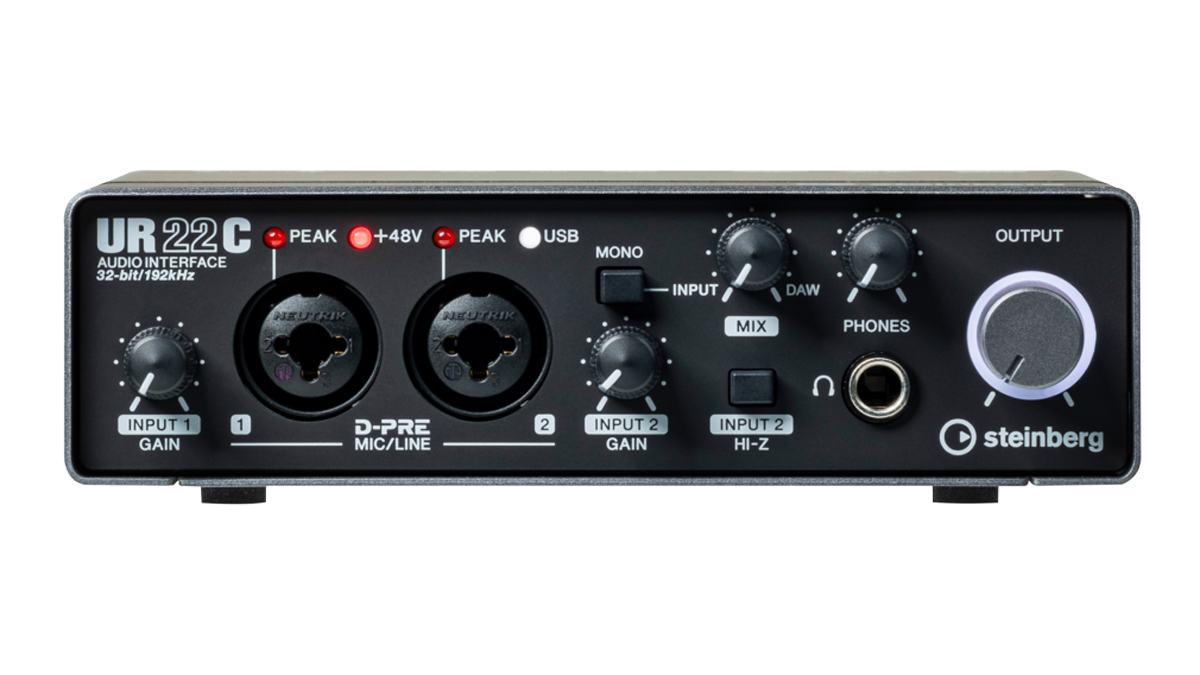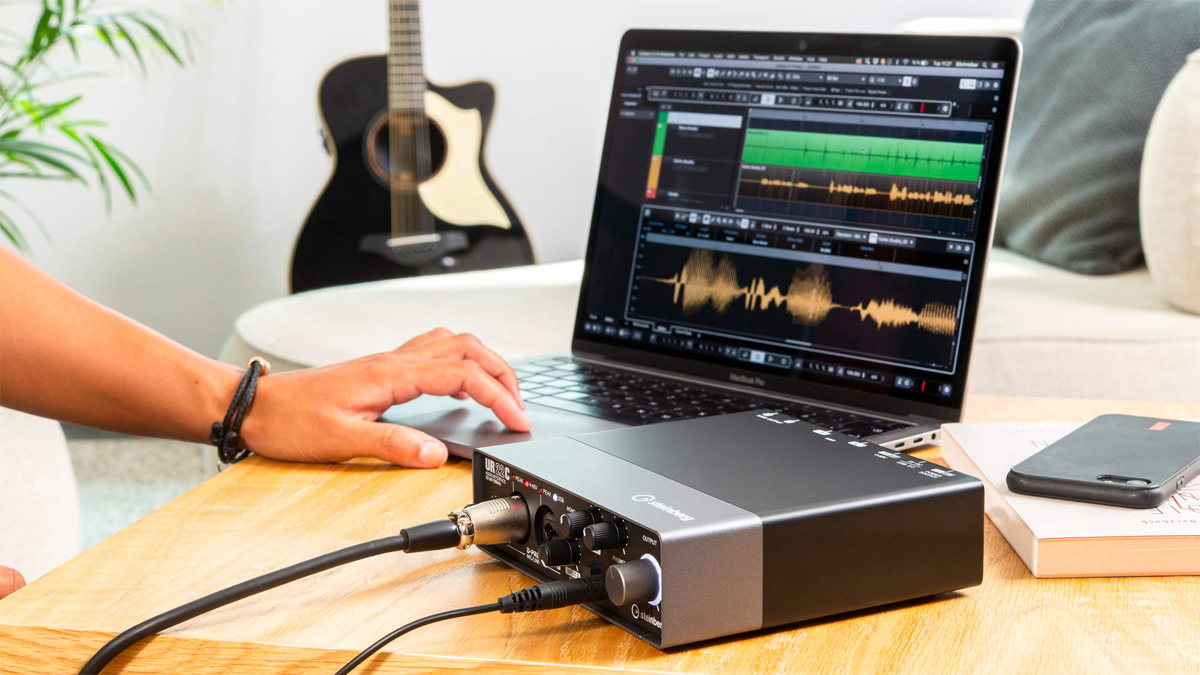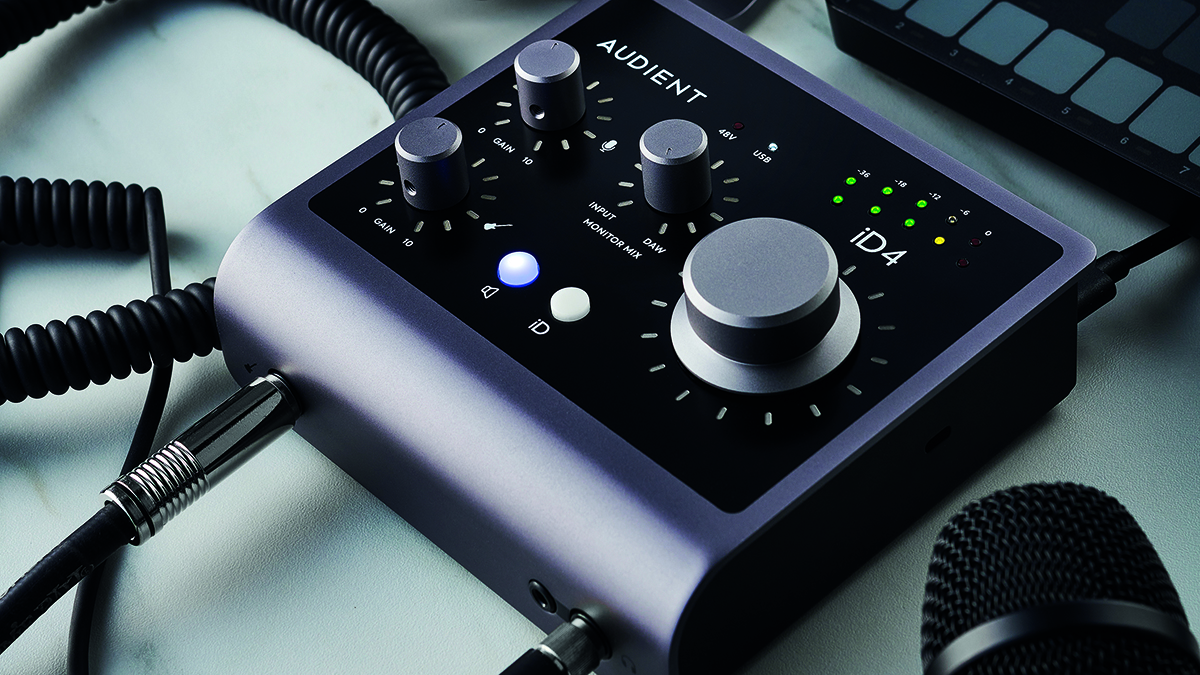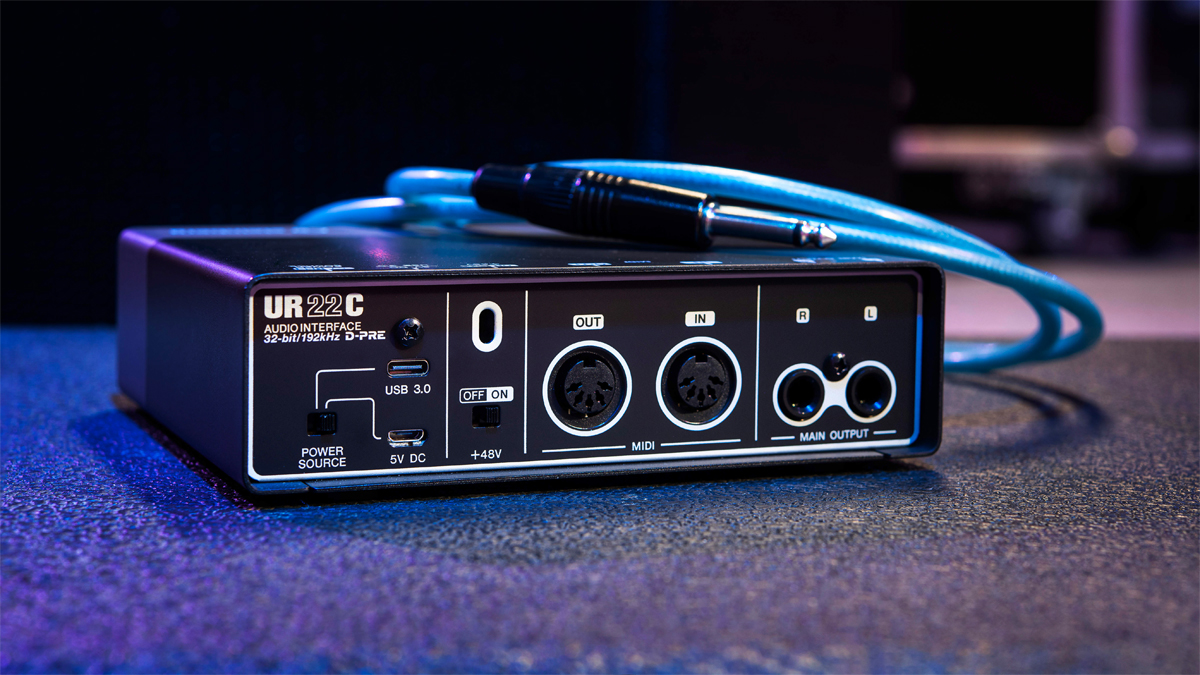MusicRadar Verdict
Overall Steinberg's UR22C interface maintains the level of quality we have associated with the company's UR interfaces – clean and crisp recordings, a rugged enclosure and all for a very decent price. The 'C' update adds faster connectivity, higher bit rates and the DSP effects with zero latency are a real bonus for input recording.
Pros
- +
Extremely solid build
- +
Great DSP effects
- +
Fantastic sound quality
- +
Very good software bundle
- +
Uses fast USB 3
Cons
- -
Requires another power source to use with iOS
MusicRadar's got your back
Steinberg UR22C review: What is it?
The Steinberg UR22C is the entry level, 2-channel model in the German company’s latest UR-C audio interface range, which utilises super-fast USB3.1 and high-quality 32-bit/192 kHz recording. All the models in the range boast a tough metal casing and built-in DSP effects but the UR22C is the most portable, aimed at both laptop and iOS producers. As such there's also a great bundle of software, as you might expect from Steinberg, that includes versions of its award-winning Cubase DAW for both desktop and iOS (Cubasis LE).
Steinberg is now owned by Yamaha and the hardware giant's influence is all over the UR22C with some key features that are also included in Steinberg's much more expensive audio interfaces. You get high quality D-Pre class A preamps on the input channels for a warm and transparent recorded sound. Then there's the Yamaha SSP3 DSP chip, delivering latency-free monitoring with high quality built-in effects including the REV-X reverb, the Sweet Spot Morphing Channel Strip and Guitar Amp Classic effects. You'll also find A-D/D-A converter in the UR22C that would normally be at home in much higher end units delivering, as they do, a maximum sampling rate of 192 kHz with 32-bit resolution.
You get two combination XLR / 1/4” mic and line inputs with +48v phantom indicator for high-quality mic connection and a hi-Z option to toggle between a line or instrument level for input channel 2. Around the front you also get controls for Mix (which handily controls the level between the two inputs on the interface and the audio from your DAW) and Mono (to monitor the left or right input or a mono mix of both) plus a studio headphone output and associated level control.
A main dial controls the output of the interface, the connections for which are around the back along with standard sized MIDI connection (In and Out) and USB C and micro-USB connectivity. For use with iOS devices you will need a Lightning to USB Camera Adapter and, because the interface draws its power via USB, you will need another power source like the optional DC adaptor which can also connect around the back of the unit.
- Record for less with the best budget audio interfaces
Steinberg UR22C review: Performance & verdict



The specs might be high-end but the user that UR22C is aimed at is very much the home and mobile producer, something that the almost ridiculously low price bears out, and in use the UR22C is very straightforward. The all-metal chassis is built for all occasions; you wouldn't call the unit pocket-sized though, although it can definitely be thrown in a backpack alongside your iPad or the compartment of a laptop bag. You get Mac and PC dspMixFx software (iOS users can download a dspMixFx app) that gives you a mixer for the channels, routing options with your DAW and access to the DSP effects which can process the input signals with no monitoring latency, essentially allowing you to add effects to your sound before anything has been recorded.

Focusrite Scarlett 2i2: Similar price and specs – and indeed layout – and also comes with a good software bundle
Audient iD4 Mk II: 2-in 2-out interface with lovely, ergonomic design, mobile credentials and great sound quality
PreSonus Audiobox USB 96: Somewhat cheaper 2-channel interface, perhaps not quite so rugged but comes with good software too
When recording takes place, the red LEDs above each input show clipping (the other LEDs showing +48V power or a white one for USB power). We found the recording quality to be as transparent and clean as previous UR interfaces we've tested, with noise only really prevalent when we pushed the input too much. Vocal recordings are clear and the dynamic range is broad and detailed with very little missing for all of the instruments and vocals we recorded. But one of the big USPs of the UR22C is that the input needn't be transparent as you can add those effects directly to your audio inputs. We found these to be versatile and very useful – the guitar ones being especially welcome to liven up any input recorded sounds. That said, we'd still probably recommend making most of your recording dry, or make at least one take dry, adding effects later in the mix stage – and all of the DSP effects are available as VSTs to do this.
Overall Steinberg's UR22C interface maintains the level of quality we have associated with the company's UR interfaces – clean and crisp recordings, a rugged enclosure and all for a very decent price. The 'C' update adds faster connectivity, higher bit rates and the DSP effects with zero latency are a real bonus for input recording. The software bundle is a great addition with those two versions of Cubase, the dspMixFx mixing software plus Basic FX Suite (which includes the VST 3, AU and AAX versions of the onboard DSP plug-ins) and with USB power it's a great mobile solution. Quality and mobility don't come much better at this price.
Want all the hottest music and gear news, reviews, deals, features and more, direct to your inbox? Sign up here.
Steinberg UR22C review: Hands-on demos
Absolute Music
Julian Krause
Steinberg UR22C review: Specification
- Interface type: USB3.1 (plus iOS via optional lightning adaptor), Mac and PC
- Connections: 2 x combi XLR 1/4” inputs, MIDI In and Out, 2 x balanced 1/4” outputs, 1/4” headphone output
- Power: USB, DC (PSU optional)
- Cables: USB3 (for external power from a Mac or PC) plus
- Contact: Steinberg
Andy has been writing about music production and technology for 30 years having started out on Music Technology magazine back in 1992. He has edited the magazines Future Music, Keyboard Review, MusicTech and Computer Music, which he helped launch back in 1998. He owns way too many synthesizers.

